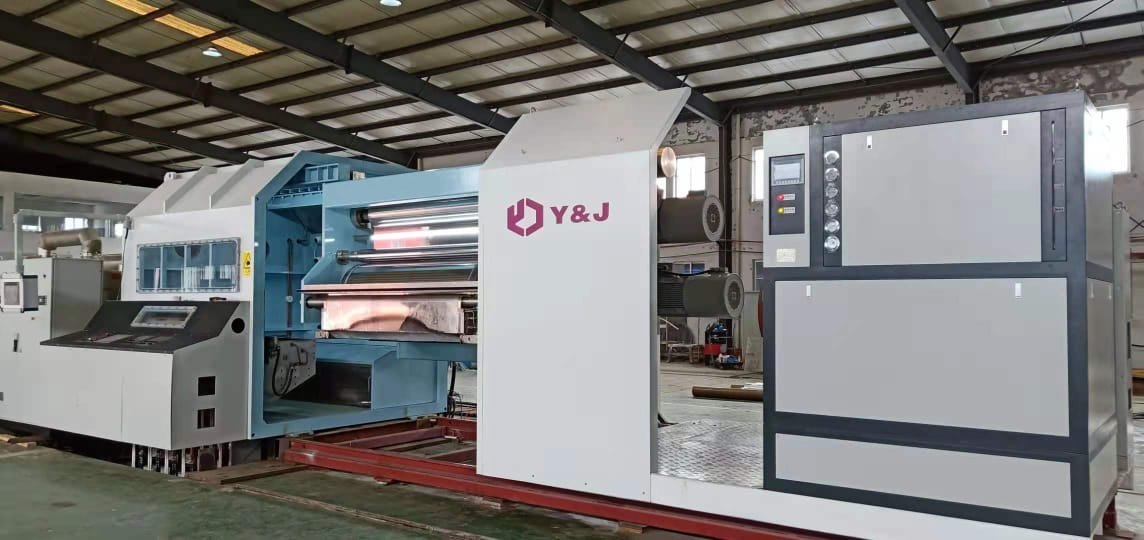When people think of Japan’s technological rise, the spotlight often falls on robotics, cars, and electronics. But there’s another story unfolding quietly behind the scenes — the story of vacuum metallizing. What started as a laboratory experiment decades ago has grown into a nationwide industry standard, shaping everything from packaging and electronics to automobiles and high-tech shielding.
This process, simple in theory yet complex in execution, has moved far beyond the lab. Today, metallized films and coatings are embedded in everyday life, proving how Japan’s blend of craft, precision, and creativity can reshape global industries.
What Exactly is Vacuum Metallizing?
Vacuum metallizing involves depositing a thin metallic layer — often aluminum or copper — onto a base material inside a vacuum chamber. The result is a film that carries the best of both worlds: the flexibility of the substrate and the conductivity, reflectivity, or shielding performance of metal.
In practice, this technology is everywhere. I’ve personally handled films like:
- Aluminum Metallized PET Film – highly reflective, lightweight, and reliable for EMI shielding.
- Copper Metallized PET Film – prized for its superior conductivity, making it perfect for electronic devices.
- Aluminum Metallized PP Film – cost-effective, often used for insulation and packaging.
- Copper Metallized PP Film – durable and conductive, used in industrial applications.
- Aluminum Metallized PI Film – known for heat resistance, crucial in automotive and aerospace.
- Copper Metallized PI Film – combines durability with shielding for high-performance systems.
- Copper Metallized PPS Film – chosen for extreme environments where reliability is non-negotiable.
- Metallized Conductive Fabric – flexible enough for wearables and adaptable shielding solutions.
Each type of film solves specific problems. Japanese manufacturers excel at matching the right material to the right application, ensuring performance without compromise.
Shielding: The Hidden Backbone of Technology
One of the most practical uses of metallized films is electromagnetic shielding. With more electronics packed into smaller devices, EMI (electromagnetic interference) can easily disrupt systems. From my own experience, a single unshielded cable can throw off entire control panels — an expensive lesson many manufacturers want to avoid.
That’s why shielding tape has become indispensable. This simple-looking product provides a quick, effective barrier against EMI. I’ve seen it used in electric vehicles, aerospace equipment, and industrial machines. Whether applied to cable harnesses or layered into circuit housings, shielding tape ensures stability and compliance with global safety standards.
At Shieldingtape.com, our tapes are engineered for demanding environments. They’re not just off-the-shelf solutions; they’re tested and proven for real-world performance.
The Versatility of Polyester Film Tape
Another unsung hero in this space is polyester film tape. Known as PET tape, it combines strength with flexibility, making it one of the most versatile tools on the factory floor.
In Japan, polyester film tape is commonly used for motor windings, insulation in transformers, and as a protective layer in electronics. I’ve seen it hold up in high-temperature conditions without losing adhesion — something not every tape can promise. And when paired with vacuum metallized films, PET tape offers even more resilience against heat, moisture, and abrasion.
This is why Japanese factories — known for their precision — rely on polyester film tape as part of their core material toolkit.
From Labs to Lifestyles: Japan’s Approach
What’s unique about Japan is the way it takes a lab technology like vacuum metallizing and integrates it into everyday life. Automotive companies use metallized films to make cars lighter and more fuel-efficient. Electronics manufacturers rely on them to keep smartphones and laptops running without signal interference. Even packaging companies now use metallized coatings to create eco-friendly alternatives that look premium while being recyclable.
This holistic approach — combining craft, coatings, and creativity — is what sets Japan apart. It’s not just about efficiency; it’s about building products that last, perform, and inspire confidence.
Why Shieldingtape.com is Trusted by Manufacturers
When it comes to sourcing shielding and metallized products, trust and authenticity are essential. At Shieldingtape.com, we’ve built our reputation by providing only 100% genuine materials — from shielding tapes to PET films and advanced metallized fabrics.
Here’s why manufacturers continue to choose us:
- Experience – We know these materials inside and out, having worked with them in real-world conditions.
- Expertise – Our product range covers PET, PP, PI, PPS, and conductive fabrics — each tailored to specific needs.
- Authoritativeness – We’re not just suppliers; we’re specialists trusted by industries where failure isn’t an option.
- Trustworthiness – Every product is transparently described, tested, and backed by quality standards.
When you buy from Shieldingtape.com, you’re not taking chances. You’re investing in reliability and long-term performance.
Conclusion: Japan’s Story, Your Opportunity
The story of vacuum metallizing in Japan is about more than coatings — it’s about innovation that starts in the lab and ends in the products we use daily. From shielding tape that keeps electronics stable to polyester film tape that supports insulation, these materials are shaping industries worldwide.
For manufacturers who want to benefit from the same level of precision and reliability that Japan is known for, the path is simple: choose genuine, trusted solutions. At Shieldingtape.com, we bring that expertise directly to your production line.
